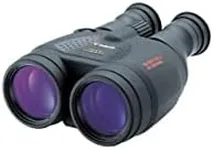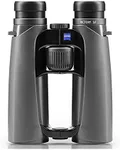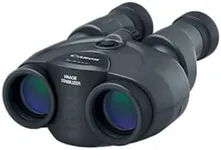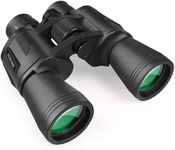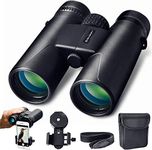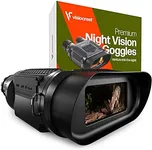Buying Guide for the Best Image Stabilized Binoculars
Choosing the right image-stabilized binoculars can greatly enhance your viewing experience, whether you're birdwatching, stargazing, or enjoying a sports event. Image-stabilized binoculars are designed to reduce the shakiness that can occur when holding binoculars by hand, providing a clearer and more stable image. To find the best fit for you, it's important to understand the key specifications and how they align with your needs.MagnificationMagnification refers to how much closer an object appears when viewed through the binoculars. This is important because higher magnification can bring distant objects into clearer view. However, higher magnification can also make the image shakier, which is where image stabilization comes in. Typically, magnifications of 8x to 10x are suitable for general use, while higher magnifications like 12x or more are better for specific activities like stargazing. Choose a magnification that matches your primary use; for example, 8x for birdwatching or 10x for sports events.
Objective Lens DiameterThe objective lens diameter is the size of the front lenses of the binoculars, measured in millimeters. This spec is important because larger lenses can gather more light, providing a brighter and clearer image, especially in low-light conditions. Objective lens diameters typically range from 25mm to 50mm. For daytime use, a smaller diameter like 25mm to 35mm is sufficient, while for low-light conditions or stargazing, a larger diameter like 40mm to 50mm is preferable. Choose based on when and where you plan to use the binoculars most often.
Image Stabilization TechnologyImage stabilization technology helps to reduce the shakiness of the image caused by hand movements. This is crucial for maintaining a clear and stable view, especially at higher magnifications. Different models use various stabilization methods, such as gyroscopic or electronic stabilization. The effectiveness of the stabilization can vary, so it's important to read reviews and possibly test the binoculars if you can. If you plan to use the binoculars for extended periods or at high magnifications, prioritize models with highly effective stabilization technology.
Field of ViewField of view (FOV) is the width of the area you can see through the binoculars, usually measured in feet at 1,000 yards or meters at 1,000 meters. A wider field of view allows you to see more of the scene without moving the binoculars, which is beneficial for tracking moving objects like birds or athletes. FOV can range from around 300 feet to over 400 feet at 1,000 yards. If you need to follow fast-moving subjects, opt for a wider FOV. For stationary or slow-moving subjects, a narrower FOV may be acceptable.
Weight and SizeThe weight and size of the binoculars can affect how comfortable they are to use, especially for extended periods. Heavier binoculars can be more tiring to hold, while lighter models are easier to carry and handle. Sizes can vary from compact to full-size. If you plan to carry the binoculars on long hikes or use them for extended periods, consider a lighter and more compact model. For stationary use or short viewing sessions, weight and size may be less of a concern.
Durability and Weather ResistanceDurability and weather resistance are important if you plan to use the binoculars outdoors in various conditions. Look for features like waterproofing, fog-proofing, and rugged construction to ensure they can withstand the elements. Binoculars with rubber armor can provide better grip and shock resistance. If you will be using the binoculars in harsh weather or rugged environments, prioritize models with high durability and weather resistance. For indoor or fair-weather use, these features may be less critical.
